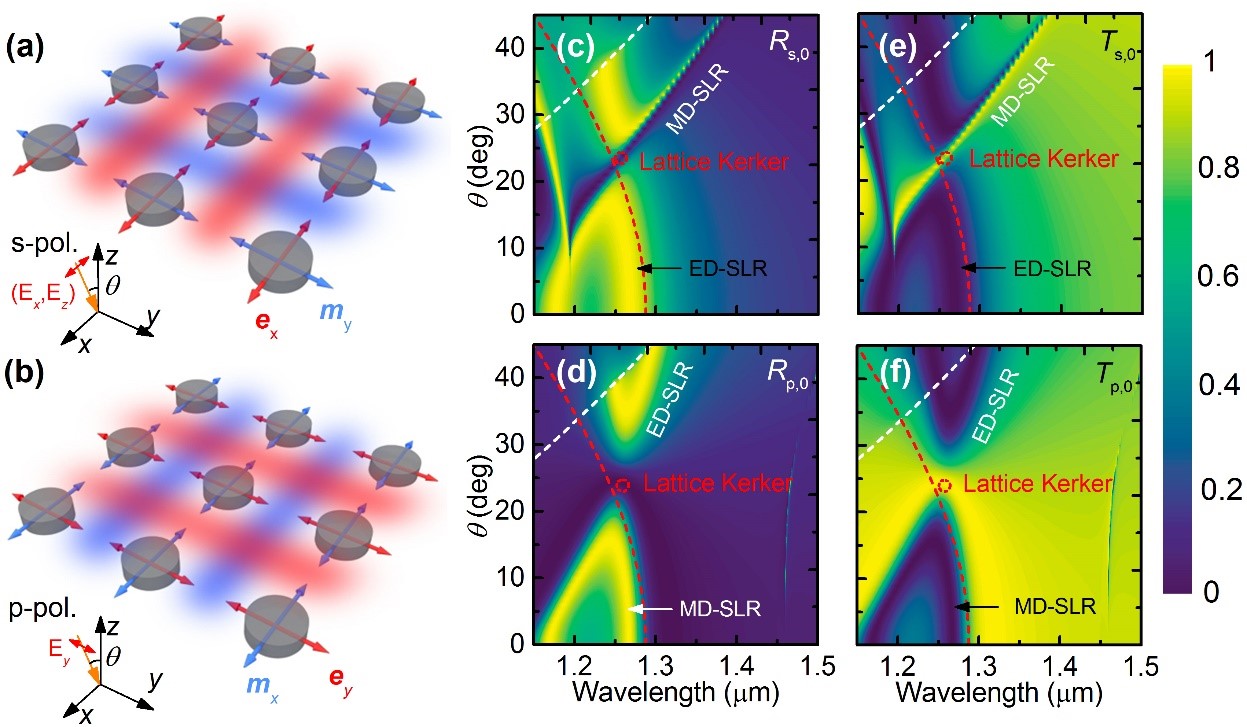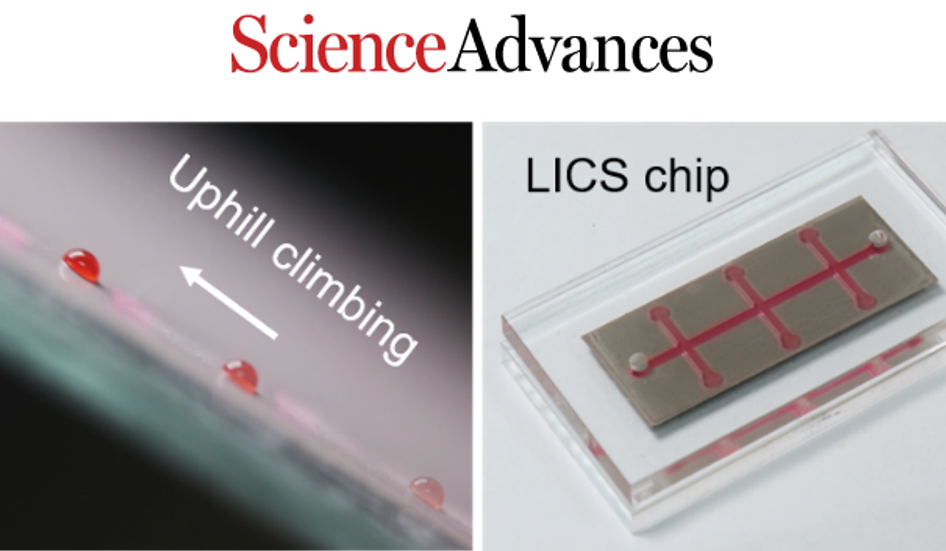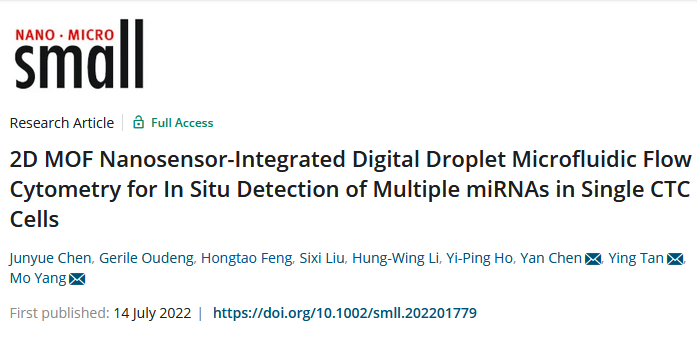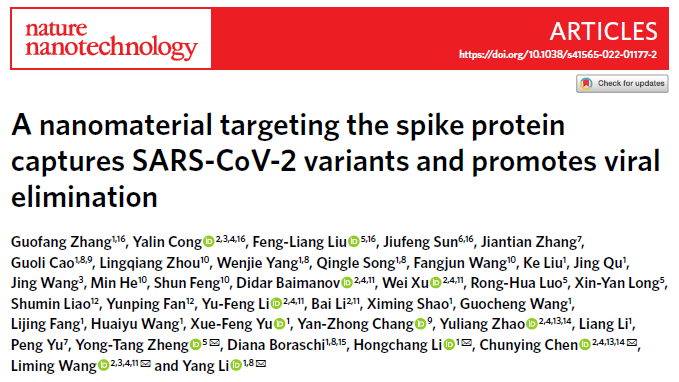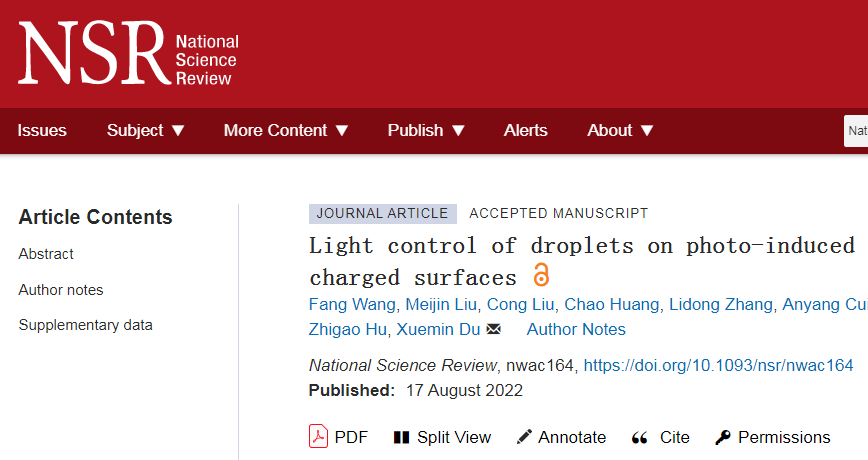
SIAT Research
-
Sep 07, 2022Dual Lattice Kerker Effects: Controlling Light Scattering with Incident Polarization and AngleThe researchers expected that by introducing more degrees of freedom, including the incident polarization and angle, and the lattice periods to the generalized Kerker effects, dynamically tunning w... By using all-dielectric nanostructures, light can be scattered to a well-defined direction, which is the so-called generalized Kerker effects. These effects, however, are usually polarization-indep...
-
Aug 26, 2022Researchers Develop New Slippery Surfaces for Photocontrol of Droplets"The simple design, portable operation, and unique features of the LICS would open new avenues for the next-generation interfacial materials and microfluidics, bringing wide possibilities for chemi... A research team led by Dr. DU Xuemin from the Shenzhen Institute of Advanced Technology (SIAT), Chinese Academy of Sciences, has reported a new slippery material with superior light-induced charge ...
-
Aug 24, 2022New Strategy for In Situ Detection of Multiple miRNAs in Single CTC CellsThe Nano-DMFC platform successfully demonstrated a new strategy for CTC detection using miRNAs as biomarkers. This miniaturized, highly integrated and easy-to-operate platform for miRNA analysis in... In liquid biopsy studies, circulating tumor cells (CTCs) detection strategies based on surface epithelial markers are widely used. However, they suffer from low specificity in distinguishing betwee...
-
Aug 23, 2022Scientists Develop Novel Anti-Coronavirus Nanomaterial with Broad Spectrum and High EfficacyThe study was published in Nature Nanotechnology on August 22nd. A joint research team led by Dr. LI Yang from the Shenzhen Institute of Advanced Technology (SIAT) of the Chinese Academy of Sciences (CAS) has developed a nanomaterial that could potentially be us...
-
Aug 23, 2022Research Develop Blood-Brain Barrier Permeable Nanoparticles for Alzheimer's Disease Treatment"To the best of our knowledge, this is the first report to demonstrate PB`s neuroprotective properties and restoration of mitochondrial function of microglia for AD treatment," said Dr. YU Alzheimer's disease (AD) is a complex neurodegenerative disease that leads to insidious deterioration of brain functions and is considered the sixth leading cause of death in the world. Current tre...
-
Aug 23, 2022Researchers Develop New Smart Material with High-Efficiency and Durable Photo-Induced Charge Regeneration Capability"Our robust and biocompatible PICS not only provides insight into the development of new smart interface materials and microfluidics," said Dr. DU, "but also brings new possibilities for chemical a... Manipulating droplet plays vital roles in fundamental research and practical applications from chemical reactions to bio-analysis. As an intriguing and active format, light control of droplets, typ...
-
Aug 01, 2022Carbon Oxide Gas Boosting Photothermal Therapy under Mild TemperatureGas therapy is an emerging and promising field, although there have some report on combination of gas therapy with photo therapy for cancer. The interaction between gas and biological process might... Photothermal therapy (PTT) is a safe cancer hyperthermia strategy that utilizes photothermal conversion agents (PCAs) to convert light energy into heat to ablate cancer cells.On one hand, high-temp...
-
Jul 21, 2022"Healthy Underweight" Individuals Topple Research ExpectationsThese scientists focused on individuals with very low BMI and obtained results that contradicted their assumptions about metabolism in low BMI individuals. Their findings were published in Cell Met... Obesity is a major global health problem, and most research to date has focused on studying those with the highest body mass index (BMI). However, a research group in China is taking a different ap...
